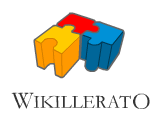How Does Screen Printing Actually Function?
De Wikillerato
Vernie182 (Discutir | contribuciones)
(Página nueva: Screen printing, or silk screening, is an age-old approach to print on just about any material. With new machinery it is even possible to print on cylinders which, with traditional sc...)
Ir a las siguientes diferencias →
Revisión actual
Screen printing, or silk screening, is an age-old approach to print on just about any material. With new machinery it is even possible to print on cylinders which, with traditional screen printing solutions, could be not possible. The original silk made use of for any screen has been replaced nowadays having a nylon material which has an extremely, pretty tight mesh. It does still possess the really feel and appearance of silk.
The screen material is stretched more than a frame, frequently made of wood. It can be lots like a screen window which you would have inside your home, although the screen mesh is much tighter, which means the weave is much closer with each other. The screen is coated on both sides with a product known as "emulsion". Emulsion is usually a photo sensitive material that may coat the nylon mesh. When it truly is exposed to light the emulsion hardens and bonds together with the screen mesh. Nothing at all occurs towards the emulsion exactly where light is blocked from reaching it and it truly is later washed away.
The process requires three fundamental methods. A single should be to prepare your artwork, image or text and get that made into a piece of film. This film is clear using the artwork or text becoming black. Second is to lay this film on top of your screen and expose it to a light supply for any pre-determined level of time. Third you are going to lay your screen onto the material to become printed on and drag ink over it using a squeegee.
Let's say we want to print the letters "ABC". We would begin by building a piece of film that would have the 3 letters on it, most likely correct in the center. The three letters will be black on this piece of film as well as the rest will be transparent. This piece of film is laid flat onto the screen in addition to a piece of glass is laid over it to help keep all the things from moving. When we expose this to light the clear regions around the film will harden the emulsion and make it permanent on the screen. After the exposure the screen is washed with running water and also the Bottle Printing equipment parts from the emulsion that weren't exposed to light will wash away. Within this situation we'll have our letters "ABC" on our screen where ink will pass by way of and print to whatever material is under it since the unexposed emulsion will wash away.
If we wanted to print every single on the letters in a diverse colour, let's say red, white and blue, we would require a separate screen for every single of your three letters, but we would must have every letter in the appropriate position so that they did not print on top rated of each other or out of position. The easiest strategy to do that with our "ABC" scenario should be to setup the three separate screens and after that block the "B" and also the "C" with paper or even a tape and do the exposure of just the "A". We'll contact this our red screen. We'll block the "A" and also the "C" off our next screen and get in touch with that our white screen. Now we'll block the "A" and "B" and contact this our blue screen. Now we've three separate screens, each inside a separate frame and each with a part of our "ABC" image. We could make three separate pieces of film also, every single one with just 1 letter, but that requires added supplies.
When printing this "ABC" image we will print the "A" screen, then the "B" screen and ultimately the "C" screen to come up with our 3 colour image. Care has to be taken to register your frame inside the exact exact same spot each time to ensure that all text and photos on the screen show up inside the correct spots on the completed item.
To print the screen is laid down on the material that you just need to print. Everything must be held securely in spot so the frame, nor the material moves at all. The color of ink you wish to use is then applied for the screen above the image. If we are printing the "A" then that screen is placed over the material and red ink is placed onto the screen. We will then take a squeegee and pull the red ink down more than the letter "A" and after that back up once more to go more than it a second time. This can have printed the letter "A" in red ink onto whatever you happen to be printing on, a t-shirt, poster or whatever. Repeat this method with the other two letters and ink colors to finish the item.
Screen printing is among the best solutions to print onto cloth and paper amongst quite a few other points. Modern equipment allows you to mass make merchandise like t-shirts. A typical t-shirt printer might be set up with stations and many people will operate the machine at the identical time, every printing a single colour. The Screen printing machine would then index, or revolve, to move the t-shirt into the subsequent position and print that color.



